CES 2013: 9 Alluring Ultrabooks For The New Year
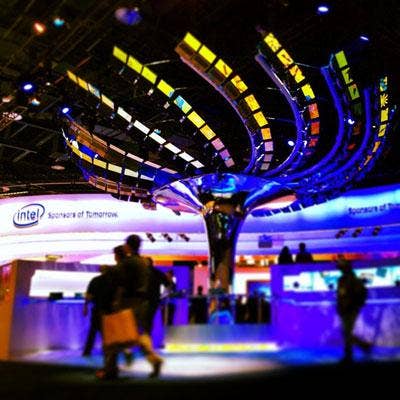
Center Stage With The Ultrabook
With Microsoft as an absentee on the CES 2013 show floor, it was up to Intel to carry the more broad Windows banner. As you'd imagine at the Intel booth, it was a mostly Ultrabook affair. The term is, after all, their concoction of marketing wizardry. Wizardry or not though, Ultrabooks were a hot commodity on the show floor. Here are the best ones that we spotted.
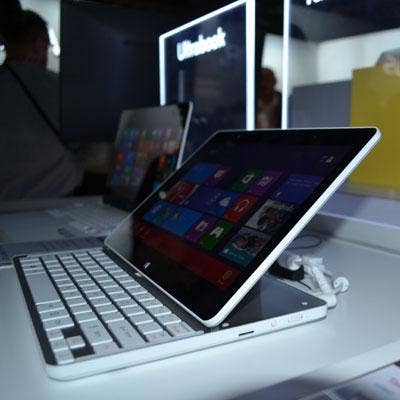
LG TabBook
Ultrabook convertibles that use unique hinges to slide the screen backward and up to reveal a keyboard haven't proven to be the most popular solution. That hasn't kept LG from trying their hand at the form factor that has given Sony and Toshiba mixed results. LG's iteration has a snappy one-button hinge that is satisfying to use. The keyboard is a bit cramped, but the i5 inside will keep things humming along. The screen is an 11.6-inch, 720p IPS panel. Unfortunately, because LG doesn't sell PCs in the States, don't expect to see this machine grace your local Best Buy.
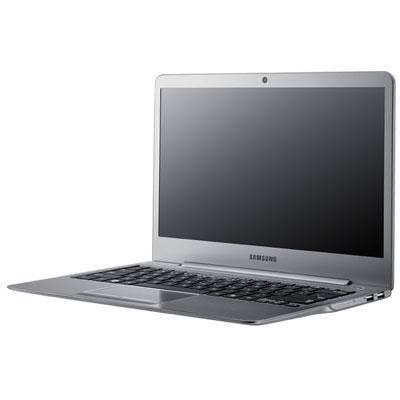
Samsung Series 5
Samsung's baseline Ultrabook is seeing an upgrade. Even this lower-end (for an Ultrabook) machine sports some higher-end features like backlit keys and a touchscreen. The Series 5 is mostly aluminum and comes in colors lifted from the Galaxy S III, like black, red and blue. This one is coming soon, like February soon, and starts at $749 for an i3 and $899 for an i5.
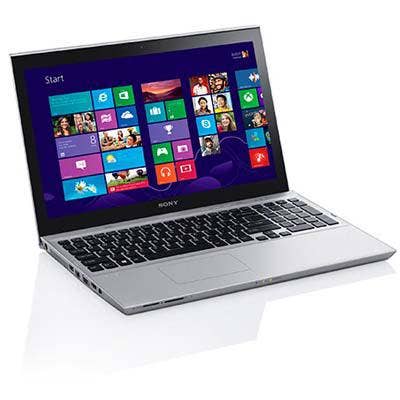
Sony Vaio T15 Touch
Sony's T13 Ultrabook led a vanguard of traditional clamshells for the Windows 8 launch. The T15 Touch expands that line to a beefier model. The new model features the same aluminum and magnesium chassis, but since its larger, there's room for a numpad. The more spacious screen rocks a 1080p panel. Once it launches in the spring, you can snag this Core i5-equipped machine for $950.
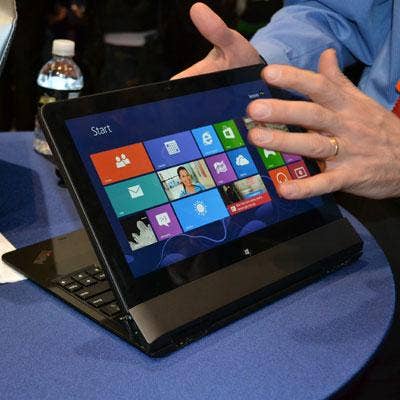
Lenovo ThinkPad Helix
Lenovo saw fit to launch yet another flagship Ultrabook (the others being the Yoga and X1 Carbon) at CES. This machine, branded ThinkPad, adds another transforming mechanic to the Chinese manufacturers repertoire. The 11.6-inch, 1080p screen can be removed and used as a tablet. For whatever reason, the screen can be attached backwards as well, facing away from the keyboard. It's nifty, but the modularity leaves the hinge as ugly as it is functional. The tablet has five hours of battery life on its own, but that figure doubles when on the dock. Things start at a Core i3 but scale up to an i7. The Helix will launch in February, starting at $1,499.
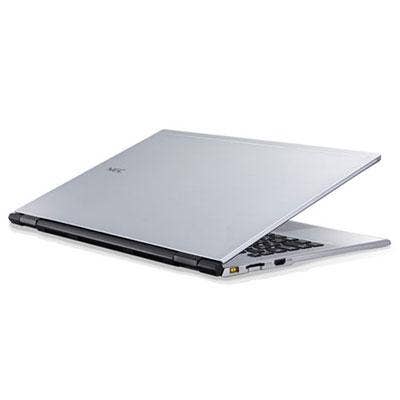
NEC LaVie X
Before you get too excited, NEC won't be bringing this beauty to the States. It's tragic, because it's one of the thinnest, at 12.8mm, lightest, at 3.5 pounds, and most beautiful, subjectively speaking, Ultrabooks. The thin frame is packed to the gills with an i7 processor, a 256-GB SSD and a pair of USB 3.0 ports. The laptop is based on Haswell, Intel's next generation of Core processors, so this beauty will be sleeping until December.
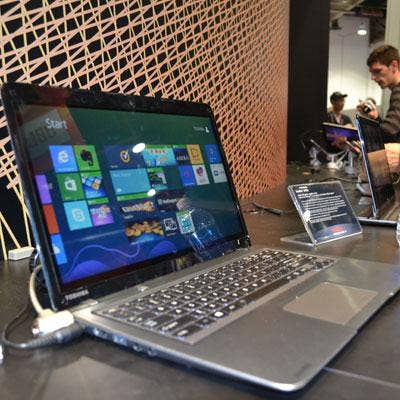
Toshiba U845 Touch
Toshiba brought along a warmed-over Ultrabook from last year. To their credit, they added a touchscreen to an already classy design without adding to the price, $799. Under the hood, things kick off with an i3 but scale up to an i6 as Toshiba scales your wallet down. The laptop is, for an Ultrabook, an unusual 14-incher with a standard issue 1,366-x-768 screen. It may not be the most exciting announcement of the show, but it is certainly a practical one.
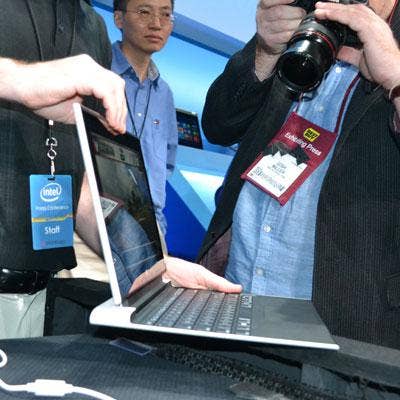
Intel North Cape Prototype
At their own press conference, Intel unveiled their vision for the future of Ultrabooks. The prototype had a next-generation Core processor onboard and a slew of nifty tricks enabled by it. First off, the new processor is small enough to be situated behind the laptops screen, allowing the top of the machine to be removed and used as a tablet with full Core processing power. The extra space in the base can be used to add more ports, engineer the keyboard for more precision or add more battery. Speaking of which, the North Cape prototype is quoted at 10 hours of battery life in laptop mode. Expect the processor and the features that come with it to hit the market in various forms in the latter half of the year.
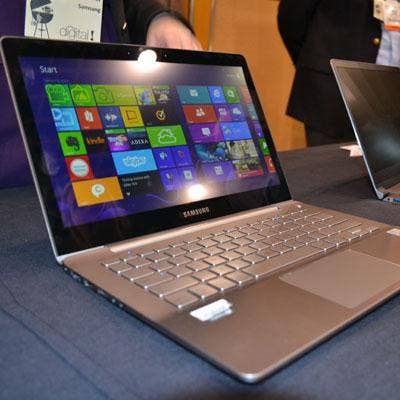
Samsung Series 7
In the lead up to CES, Samsung saw fit to refresh their mid-range Ultrabooks. The new Series 7 Ultra boasts a redesigned chassis, taking on an aluminum unibody design. The 13.3-inch screen sports a full 1080p resolution and skips the i3 to go straight to an i5. In an Ultrabook rarity, the Series 7 comes with discrete graphics, in this case AMD's HD8570. It won't be a gaming powerhouse, but the horsepower is appreciated. Pricing and availability for this bad boy are still under wraps.
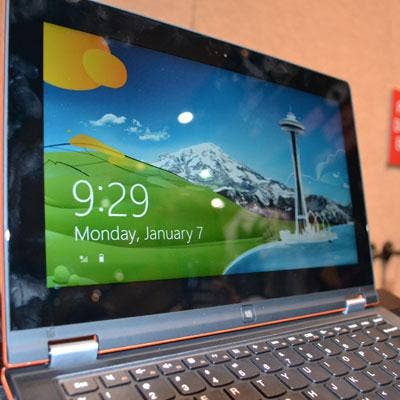
Lenovo IdeaPad Yoga 11S
Lenovo's 13-inch Yoga was one of the stars of the Windows 8 launch from yesteryear. The 11-inch variant, however, languished on the lackluster Windows RT. No more. The Yoga 11S has Windows 8 and Core i5 to run the show. Backing up the new horsepower is a 1,366-x-768 IPS panel and the same flipping hinge that made its predecessor famous. The 11S will land in June for $799. Not too shabby for the little guy.

Absentee Ballot
Microsoft wasn't the only missing belle from the Ultrabook ball. Three enormous manufacturers were missing from the party. Acer, likely riding the coat tails of their new-ish high-end machine, the Aspire S7, skipped the laptop part of the show. Dell was also an absentee; perhaps they were a bit busy stirring the pot of intrigue around their supposed anti-IPO. The real elephant out of the room though, was HP. The No. 1 manufacturer was completely silent on the Ultrabook, launching only a few wimpy AMD-powered machines. Youch.